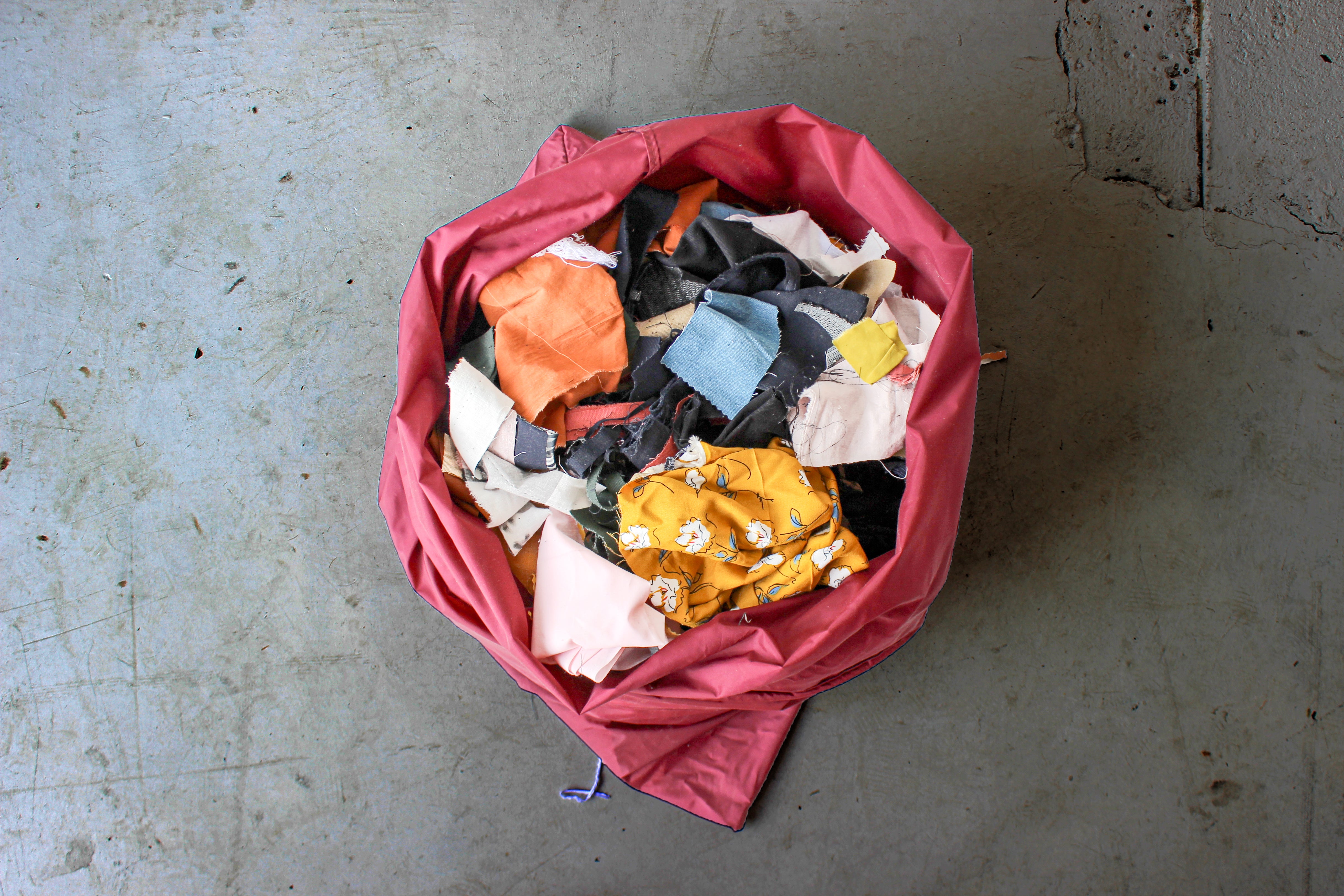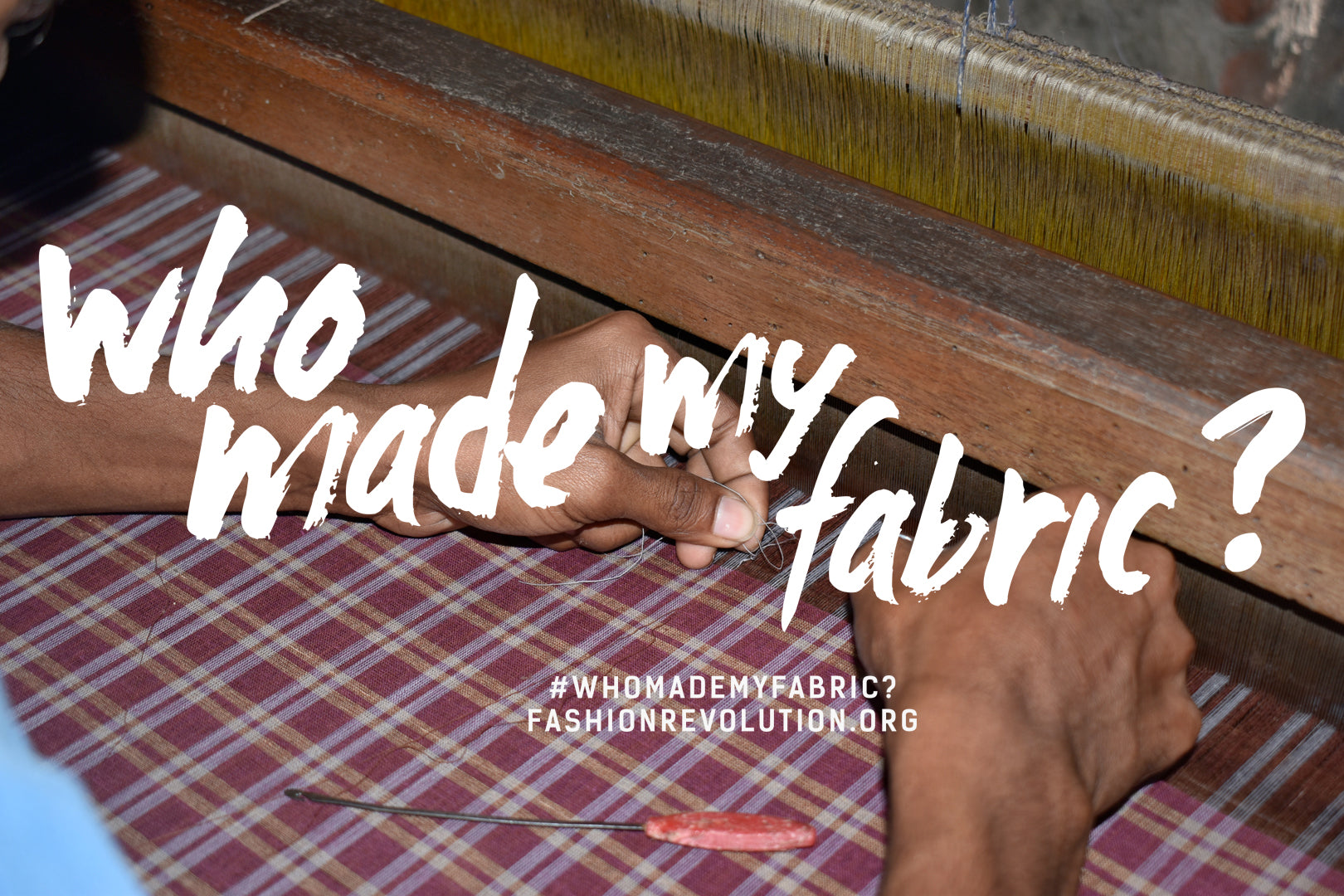
How We Manage Our Textile Waste
Here at Blackbird, we’re passionate about connecting sewists to beautiful textiles that help fuel their creative projects and inspire the creation of garments that bring them joy. Beyond this, we’re also conscious of how our actions as a business impact the people and the environment around us. Textile production and distribution, in particular, have some pretty big environmental impacts that are important for us to acknowledge, including generating textile waste.
The issue of textile waste has grown dramatically since the 1960s when the “fast fashion” model of cheap garments along with increased production, consumption, and disposal began. Each year, 92 million tons of textile waste is produced worldwide.
In the United States alone, only fifteen percent of textile waste is reused, sent to thrift stores, donated to charities, or recycled. The other 85% is sent to landfill or incinerated locally or overseas.
Why It’s Important to Us
From the water pollution produced by landfill leaks to the carbon emitted by incineration, the damaging impacts of textile waste are disproportionately felt by low-income communities, BIPOC, and those in the Global South.
As a garment fabric retailer, we have an opportunity and a responsibility to intentionally reduce our textile waste and its associated human and environmental impacts. It is important to us that we try to limit the environmental and social harms that our fabrics and supply chains have the potential to cause. One way we reduce our impact is by implementing sustainable practices at a few key stages of our order fulfillment and fabric distribution processes.
Come along as we walk you through a few of the different ways that we manage our waste!

How We Do It
Remnant Sales
At the order fulfillment stage, our team carefully inspects each fabric as they cut, keeping an eye out for any imperfections and shortages. Any miscuts, roll ends, and fabric pieces that are half a meter or larger are labeled and put on our “Remnants” shelf, which we check daily for pieces of the right length to match our outstanding orders. Every couple of months or so, we round these pieces up and hold a Remnants Sale where we list these remnants on our website at a discount. These sales are not only a great way for our customers to get one-off pieces of usable fabric at a reduced price, but also a way for us to eliminate one stream of textile waste.

Donations & In-Person Shopping Days
Throughout our fabric cutting processes, our team may also come across fabric sections with small flaws, holes or stains, or cuts of fabric less than half a meter in length. We classify these as “Unusable Scraps” as they are too short to be listed as remnants or used by the majority of our customers. Instead, we collect them over the course of a couple of weeks or months and donate them to highschool sewing and home economics programs or sell them at a deep discount at our in-person shopping days for folks to use in quilts or other scrap-busting projects. We love being able to support young sewists in their sustainable sewing journeys and see folks breathe new life into these fabrics.
Fabric Recycling through Fabcycle
Any other scraps that we are left with at the end of our order fulfillment process — swatches, small scraps, and fabric with large, unusable flaws — are picked up by a local Textile ReUSE and Recycling Centre called Fabcycle. Fabcycle works with apparel manufacturers, factories, designers, and schools to collect off-cuts, deadstock fabrics, and roll-ends that are produced during manufacturing processes. Their mission is to divert textile waste from the landfill while promoting the idea that waste is a valuable resource that can be reused in creative and sustainable ways within our community. At the end of the day, all of the textile waste they receive either gets sent to their ReUSE Center or to be industrially recycled.

Fabcycle’s work enables us to eliminate a large portion of our textile waste by reusing and recycling our most damaged and seemingly unusable bits of fabric. We are incredibly grateful for the work they do to circulate textile waste back into use, while encouraging creativity, sustainability, and resourcefulness among businesses, makers, and students.
It's important to us that we continue to offer fabrics that are environmentally and socially responsible. By managing textile waste throughout our cutting processes and connecting fabric remnants to different groups in our community, we hope to minimize our impact and contribute meaningfully to conversations about how businesses like ours can take responsibility for textile waste in this industry.
While there is still a lot of work to be done, we will continue to use our position in this industry to be transparent and push our sustainability practices forward. It’s our goal to work with our community to grow a culture of care that extends beyond fabric to the humans and environments who create it, and are impacted by its waste.
Written by Caleigh Smith






4 comments
I have been taking sewing scraps to H&M – not only do they recycle clothes, they accept thread, bits of leftover fabric, extra quilt batting that you won’t use or won’t keep for scrap-busting. I keep a bag close to my sewing area to deposit bits as I go, and then take it to the closest H&M shop. Beth (Waterloo, Ontario).
https://www2.hm.com/en_ca/sustainability-at-hm/our-work/close-the-loop.html
Beth Jewkes
Go Canada! What a fabulous system.
US yank
Lily Flower
Well done Caleigh!
As a quilter I spend my days admiring and appreciating fabric. Repurposing fabric and garments into my quilts is a new interest. Reading your article, reinforces my desire to reuse and find new opportunities to show case beautiful fabrics and handwork discarded by others,
Mary Backhouse
Tk you for all the information & work Blackbirds does to recycle & let us know, to be aware with our home projects tks linda n.e. Toronto
Linda Smith
Leave a comment
This site is protected by hCaptcha and the hCaptcha Privacy Policy and Terms of Service apply.